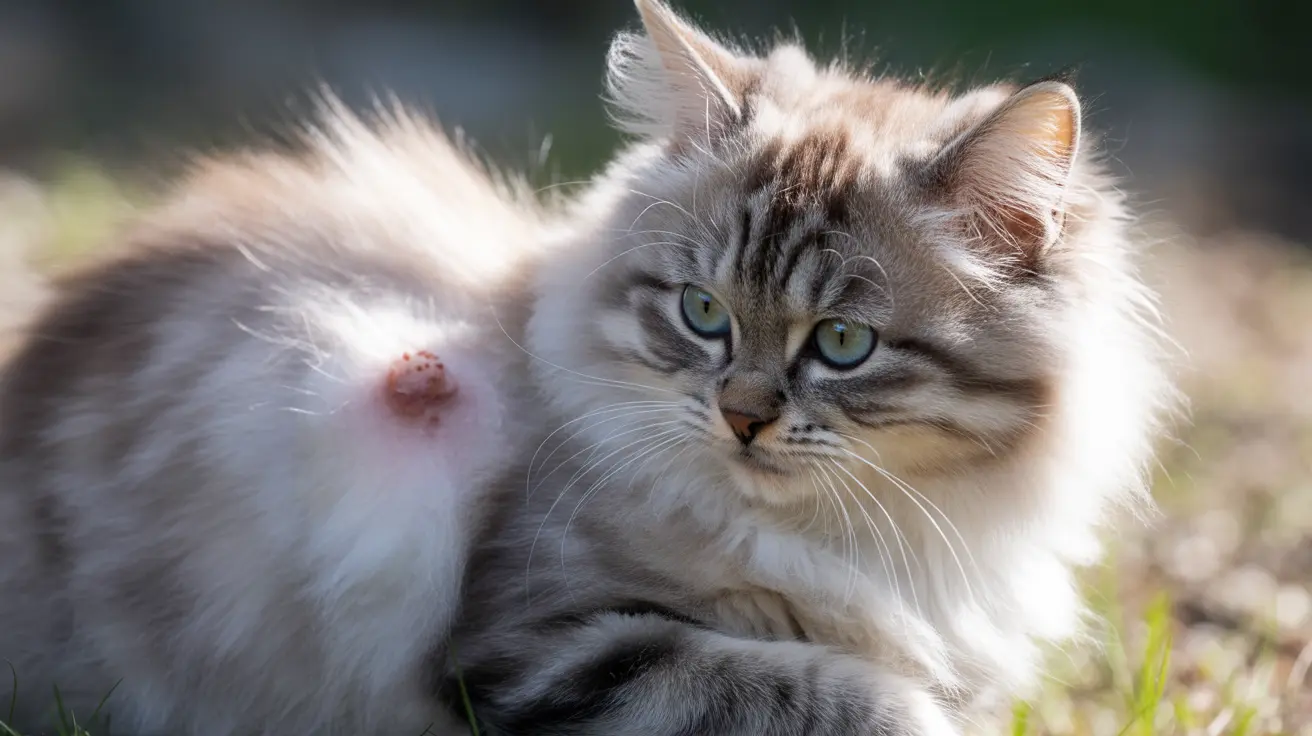Understanding Bot Fly Infestations in Cats
Bot flies, scientifically known as Cuterebra, are parasitic insects that commonly affect outdoor cats during warm weather months. While these flies primarily target rodents and rabbits, cats can become accidental hosts when exploring areas where bot fly eggs are present.
The infestation process begins when a cat encounters bot fly eggs in the environment. These eggs quickly hatch when exposed to the cat's body heat, and the larvae enter through natural openings or small wounds.
Identifying Early Stage Bot Fly Wounds
Early stage bot fly wounds can be subtle and easily overlooked. Initially, you might notice:
- Small, raised areas under the skin
- Excessive grooming in one particular spot
- Slight swelling, especially around the head and neck
- Matted or disturbed fur in specific areas
- Mild irritation or discomfort
As the condition progresses, you'll observe a small breathing hole developing in the center of the swelling, which is a definitive sign of a bot fly larva.
Signs and Symptoms to Watch For
Being vigilant about your cat's health means knowing what symptoms indicate a bot fly infestation:
- Initial small bumps that gradually increase in size
- Development of a visible breathing hole
- Discharge or moisture around the affected area
- Changes in your cat's behavior or discomfort
- Increased scratching or licking of the affected area
Treatment and Professional Care
Never attempt to remove a bot fly larva at home. Professional veterinary care is essential because:
- Proper extraction requires special techniques
- The entire larva must be removed intact
- Sterile conditions are necessary to prevent infection
- Post-removal care often includes antibiotics
- Professional monitoring ensures proper healing
Prevention Strategies
To protect your cat from bot fly infestations:
- Keep cats indoors, especially during peak bot fly season
- Regular grooming and skin checks
- Maintain clean outdoor areas around your home
- Consider preventive medications recommended by your vet
- Monitor outdoor activities in high-risk areas
Frequently Asked Questions
What do early stage bot fly wounds look like on cats and how can I recognize them before lumps appear?
Early stage bot fly wounds typically appear as small, slightly raised areas under the skin. You might notice your cat paying extra attention to a specific spot through excessive grooming. Before visible lumps appear, watch for subtle swelling and changes in your cat's fur pattern or behavior.
How do veterinarians safely remove bot fly larvae from cat warble wounds?
Veterinarians typically sedate the cat and carefully extract the larva using sterile surgical instruments. They may first slightly enlarge the breathing hole and use special techniques to ensure the entire larva is removed intact. The wound is then cleaned and treated with appropriate antibiotics.
What are the common symptoms and risks of bot fly infestations in outdoor cats?
Common symptoms include visible lumps with breathing holes, discharge from the wound, and localized swelling. Risks include secondary infections, allergic reactions, and in rare cases, internal migration of larvae that can cause serious complications.
Can bot fly larvae cause serious health problems in cats beyond skin lumps?
Yes, while rare, bot fly larvae can migrate to internal organs, causing severe complications. They may affect the brain, eyes, or respiratory system, leading to neurological symptoms, vision problems, or breathing difficulties if left untreated.
How can I prevent my outdoor cat from getting bot fly infestations during warm months?
Prevention strategies include limiting outdoor access during peak bot fly season, regular grooming and skin checks, maintaining clean outdoor areas, and discussing preventive medications with your veterinarian. Consider creating a secure outdoor enclosure to minimize exposure to bot fly environments.






